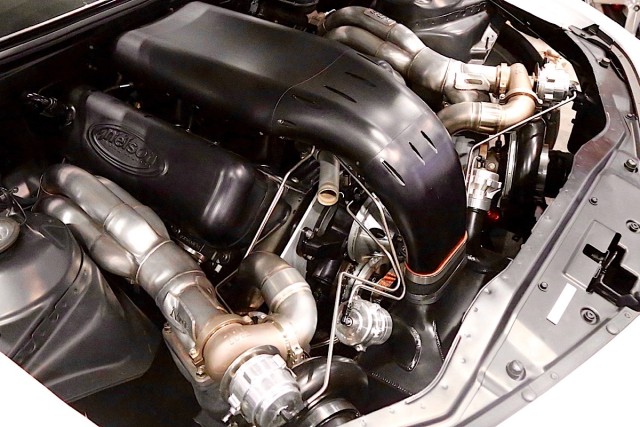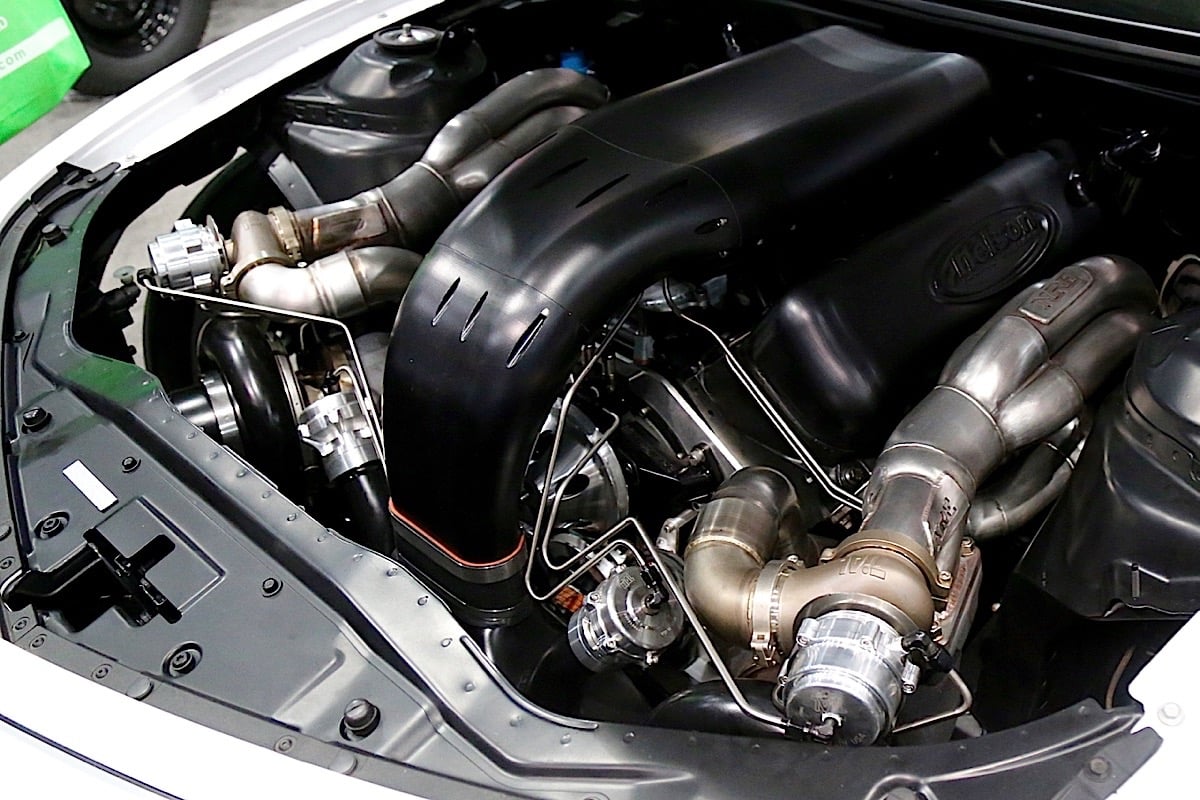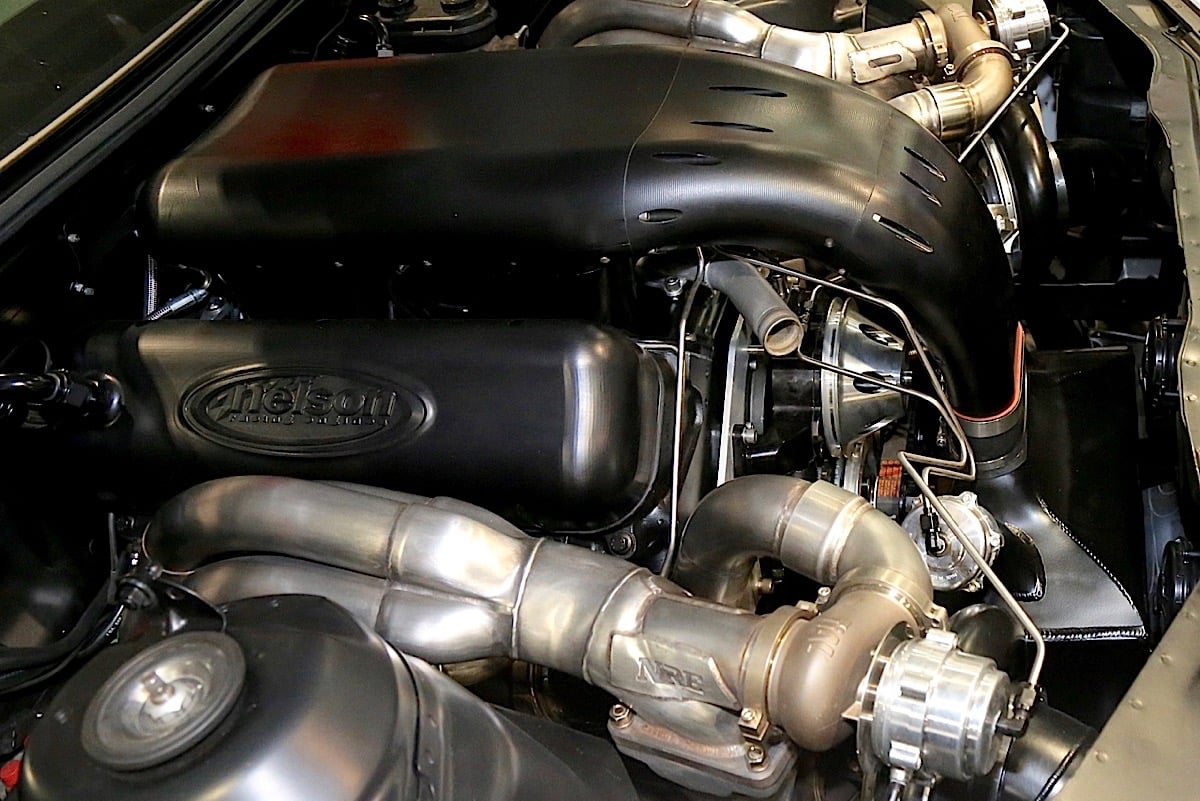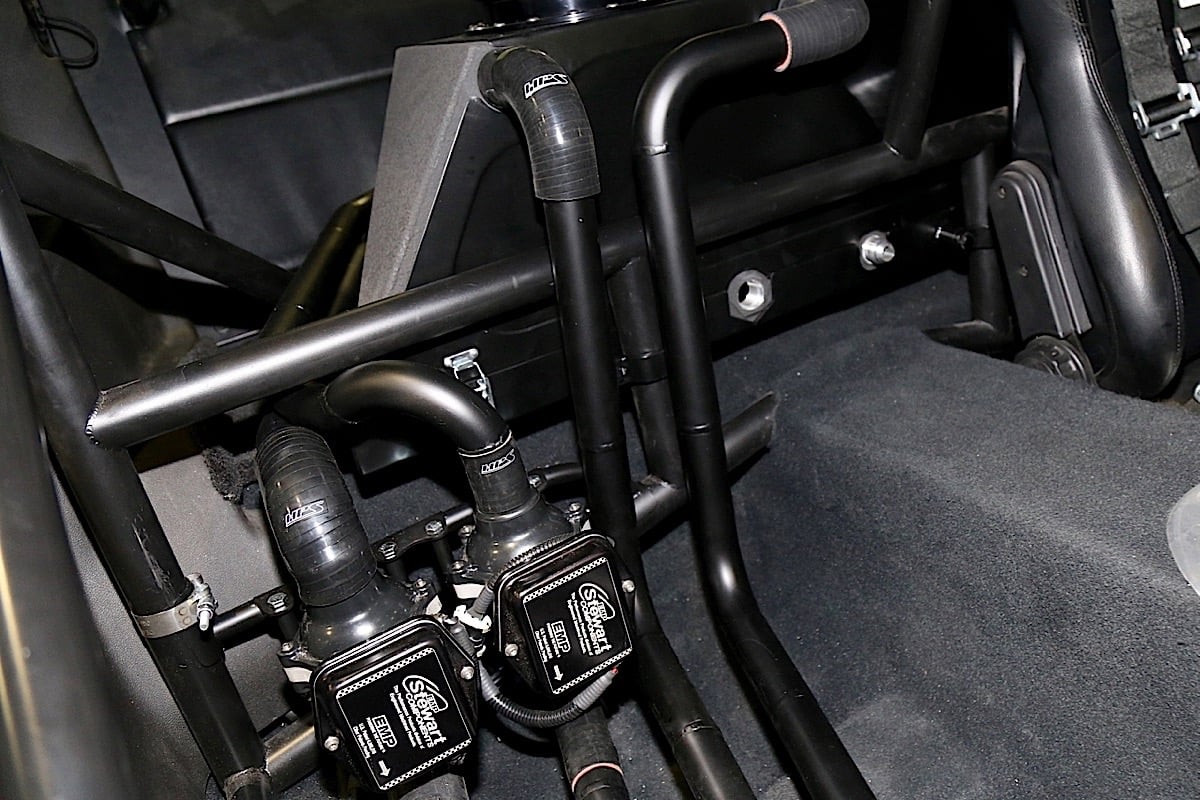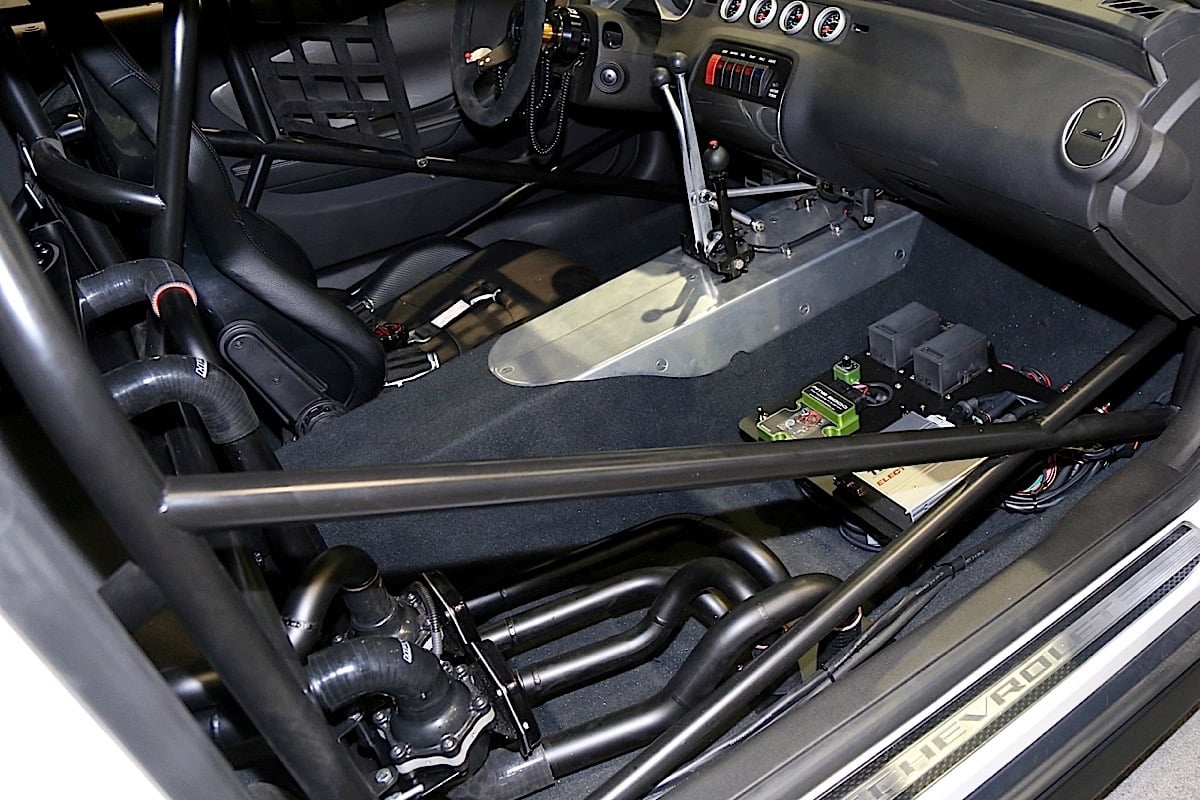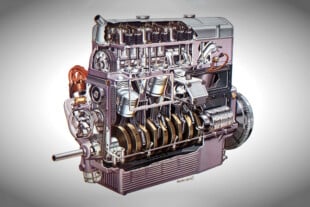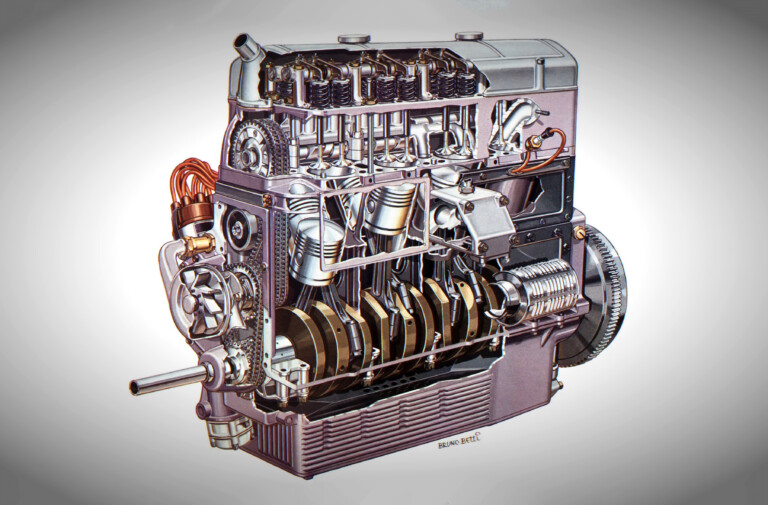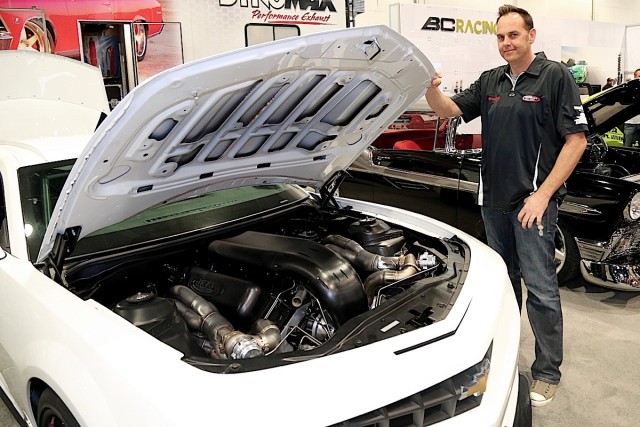 Maneuvering a car close to 250 mph requires undivided attention, so engine builder Tom Nelson is helping out by designing a boost-control system for this twin-turbo 632ci big-block Chevy capable of over 2,500 horsepower that pretty much allows owner/driver Mike Keisling to keep his eyes on the track while piloting what is arguably the baddest COPO Camaro ever built.
Maneuvering a car close to 250 mph requires undivided attention, so engine builder Tom Nelson is helping out by designing a boost-control system for this twin-turbo 632ci big-block Chevy capable of over 2,500 horsepower that pretty much allows owner/driver Mike Keisling to keep his eyes on the track while piloting what is arguably the baddest COPO Camaro ever built.
“This car was built specifically for the standing mile,” says Nelson, taking a break from showing off the car and engine during SEMA last week.
No late-model LS here. Nelson Racing Engines went with a familiar combination of a Dart tall-deck block bored to 4.600-inch and fully ported Brodix heads before slapping on its trademark mirror image 88mm turbos and Alien dual-injector intake manifold. Internals include a Callies 4.75-inch-stroke crankshaft, Oliver billet rods and custom JE pistons with extra thick decks. The heads are fitted with T&D shaft rockers that are motivated by a custom-ground solid roller camshaft. Down below there’s a 5-stage dry sump oiling system.
The fuel system is set up for complete computer control with optional input by the driver. First, there are two injectors per intake runner. Normally this setup is NRE’s Octane on Demand system for the street. Light-duty driving can get by with pump gas but when the the engine is treated to WOT, an auxiliary tank with race gas kicks in. For this application–where the goal is to accelerate from 0 to well beyond 200 mph within the span of 5,280 feet–the twin tanks are both stocked with high-octane race gas.
“The second injectors come on when we need it,” adds Nelson.
Note the extensive stainless-steel handiwork and the dual blow-off valves mounted on the intercooler.
Pressure from the twin turbos will be closely regulated by an AMS 2000 boost controller, working tightly with the Electromotive ECU.
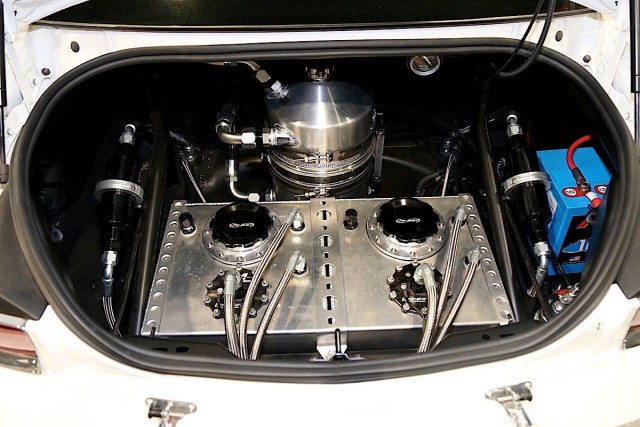
There are two fuel tanks to feed the dual injector system. Both will be filled with race gas. Note the dual-voltage battery: 16V for ignition and starter and 12V for accessories, lights, etc.
“We’ve got driveshaft and wheelspeed sensors,” explains Nelson. “We can do boost by MPH, and in this car that’s important. We can overlay a graph for how much boost comes in by MPH. We don’t want to kill the tires, so we keep [the turbos] on the gate and progressively ramp it up. Probably at the eighth mile we’ll start ramping up the boost.
“It does it automatically,” continues Nelson. “We still have to work out a few things. And he still has to drive the car, but the idea is to get it past the eighth mile, then he can put his foot down and the computer takes control from there.”
Keisling will have two buttons on his steering wheel to add or remove power as he sees fit.
“If he’s hooked up, then he can add a couple hundred horsepower,” says Nelson. “If he’s getting loose, then he can kill a couple hundred horsepower.”
The car started out as a Chevy Performance CRC (certified race chassis) roller, which is equipped identically and numbered as a production COPO Camaro but without the engine. NRE, working with Brink Racecraft, set up the chassis, installed the engine along with the wiring, intercoolers, radiator and wiring.
The car uses twin ice tanks for the radiator and intercooler.
Early pulls of the engine resulted in 1,130 horsepower at just 5.8 pounds of boost. Nelson says the turbos have the capacity to pump out 36 pounds at speed, resulting in around 2,500 horsepower. And this engine isn’t a rolling hand grenade built for one or two runs.
“The valve seats are extra wide to transfer heat. Everything is V-banded,” says Nelson.
Just getting the heads installed required a couple days. NRE uses a helicopter sealant on the copper head gaskets.
“It’s an all-day process to get the heads on,” says Nelson. “Then it’s a 48-hour drying process. It basically epoxies the head to the block.”



